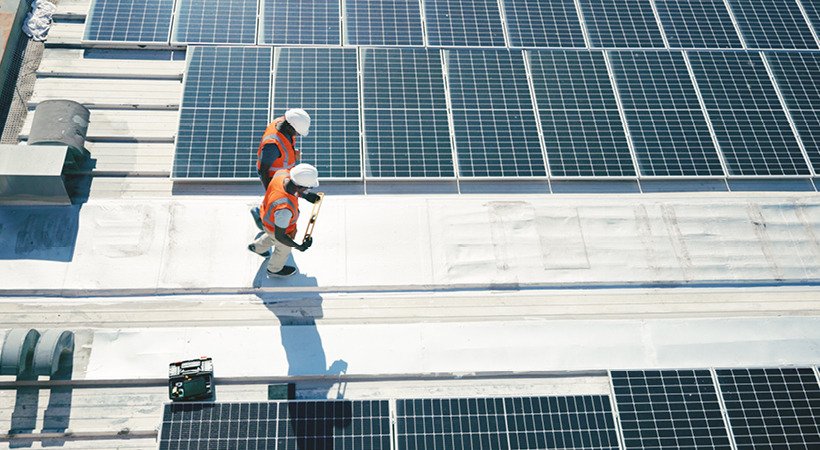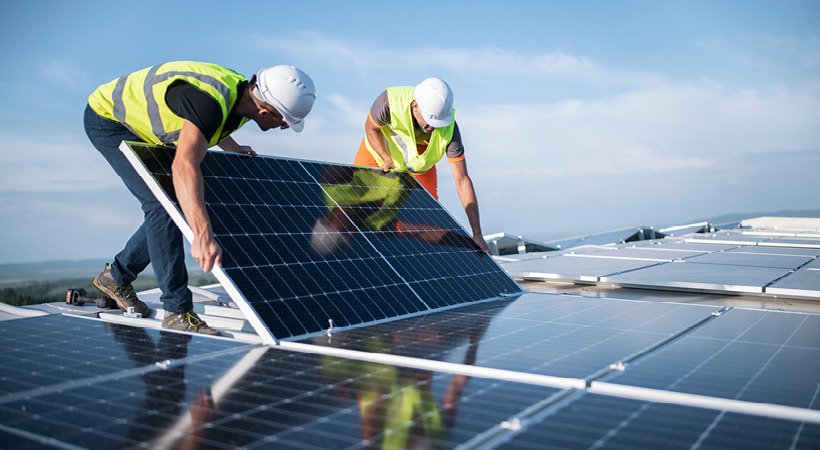8 Ways to Maximize Your Commercial Roof’s Return on Investment

As a building owner or developer, it’s natural for you to want every project to be a smart financial investment. There are several factors that can influence costs—including how you construct your commercial low-slope roof. Guarding your roof against damage during installation and throughout its life can have a significant financial impact. Taking the time to consider these points now can help your building remain profitable in the long run.
Here’s what you should consider when investing in a new commercial roof:
1. Roof Warranties
Before you sign off on your roof system and the materials that comprise it, it’s important to look at the details of any warranty you’re getting. Roof system manufacturers may offer multiple warranties that depend on the products being used. System manufacturer warranties may only consider issues related to materials. Roofing contractors often offer a workmanship warranty that supports issues related to installation as well. These warranties can vary from 1 to 5 years in duration. However, warranties in general don’t cover everything and usually expire at some point. To extend the life of your roof assembly, consider your projected time frame of ownership, regional weather conditions, and anticipated rooftop installations.
2. Maintenance Plan
Facility Executive Magazine reports: “The single most cost-effective way to maximize roof performance and life cycle longevity is to adopt a proactive approach towards preventative maintenance. Preventative maintenance minimizes the total and annualized cost of ownership of roofing systems through regularly scheduled inspections and periodic repairs of common problematic components.” Roof system manufacturers may require and/or provide a roof maintenance plan as part of a system warranty. Maintenance helps to ensure storm damage is mitigated, roof penetrations are sealed, and debris such as leaves and dirt are removed for proper draining.

3. Hail Resistance
Roof system manufacturer warranties often do not include hail and punctures unless specifically added to the warranty. Warranties written for hail may call out specific materials, such as high-performance roof cover boards, to resist damage. The first cover board to be FM approved for Very Severe Hail (VSH) in approved single-ply assemblies was DensDeck® StormX™ Prime Roof Board. This industry leader has a solid gypsum core composed of 21% crystallized water, with fiberglass mat facers on the front and back. It’s intended to be applied directly under the roof membrane. The right substrate can add structural support, as well as dramatically reduce impact damage from hail.
4. Puncture Resistance
Foot traffic and debris may result in punctures not covered in a standard warranty. Also, when rooftop equipment is inspected, cleaned or serviced, it can mean professionals make multiple trips to the roof, often carrying tools and other heavy gear that can be accidentally dropped. This can wear down the water-proofing membrane in frequently traveled areas, like the area around a roof’s access door. These hot spots become high-risk areas for puncture damage. While small punctures may not look like much, they can grow quickly, especially if water begins to seep into the assembly. As moisture spreads unchecked, mold can grow and weaken the structure. This is a problem that may not be seen until it’s too late. The best way to help mitigate the risk of puncture damage is to add a rigid substrate for support and increased impact protection to both the membrane and insulation of your roofing system.

5. Wind Resistance
When strong winds move over and around a building, it creates low pressure above the roof. This wind uplift can damage a roof in a variety of ways, like membrane delamination and fastener withdrawal. A rigid cover board that is engineered to help mitigate these risks can help provide support and an ideal bonding surface for the membrane to adhere to the roof. Adding strength to the roof assembly allows it to better withstand high winds and gusts associated with storms. This can improve fastener pull-through performance compared to paper-faced insulation or no cover board.
6. Solar Panels
System manufacturer warranties may be voided if solar panels are installed on a finished roof system. If you’re considering installing solar panels in the future, using a roof cover board with a system warranty that will allow installation of solar panels is a good idea. A solar-ready roof should be non-combustible, with the strength to support the weight of photovoltaic panels. A roof system with a projected lifespan that matches or is close to the solar panel life will also help avoid the costly removal and reinstallation of solar panels during re-roof jobs.

7. Warranty Transfers
Roof system manufacturers will typically allow for warranty transfers in the event a building is sold. Consult the roof system manufacturer for details on the transfer and any associated costs.
8. Fire Classification
While manufacturer warranties do not cover fire, an enhanced roof fire classification may improve the safety of a building. Roof assemblies are typically tested and will qualify as a Type A, B or C roof system, with Type A offering the greatest resistance to fire. DensDeck® Roof Boards are non-combustible, based on ASTM E136, meaning they won’t burn. They’ve received Class 1 Approvals by FM that measure minimum fire, wind, hail and foot traffic resistance. They meet UL Class A fire ratings for roofing systems with unlimited slope. And 5/8-inch DensDeck Roof Boards are manufactured to meet Type X requirements for ASTM C1177 for enhanced fire resistance.
So, now you know all the ways your buildings’ roofing systems can benefit from the use of a cover board, ultimately improving their resiliency and giving you a better return on investment. For further details, visit
www.buildgp.com/densdeck/.